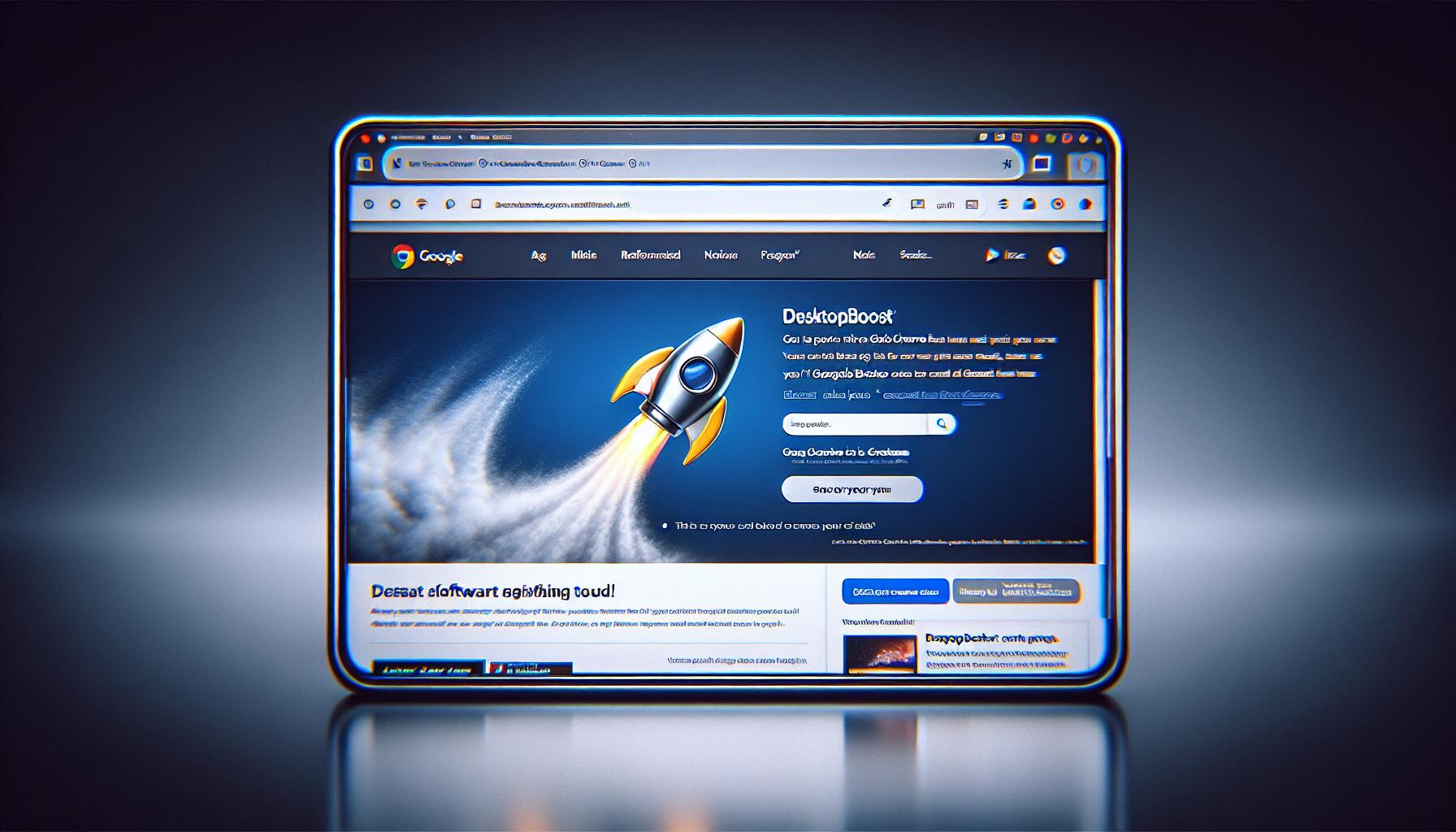What Is DesktopBoost?
DesktopBoost is a type of adware that infiltrates computers and bombards users with unwanted advertisements. This adware typically enters a computer through free software downloads, deceptive advertisements, or malicious websites. Once installed, DesktopBoost will display pop-up ads, banners, and in-text advertisements on the user’s desktop, browser, or within other applications.
DesktopBoost adware can also track the user’s browsing habits and collect personal information, such as browsing history and search queries, in order to display targeted advertisements. This invasion of privacy can lead to a compromised user experience and potential security risks. To avoid infection by DesktopBoost adware, users should be cautious when downloading free software and always opt for custom installation to deselect any additional software that may be bundled with the desired program. Regularly updating antivirus software and performing routine scans can also help detect and remove any potential adware threats on a computer.

How Adware Ends Up on Users’ Computers:
Sometimes users encounter an ad for a “handy” program or browser extension and end up installing it without reading License Agreement first and realizing that the program will generate ads or change browser settings. Many cases of adware installation happen when users install some free or “cracked” software and don’t uncheck boxes responsible for extra programs’ installation. These extra programs usually ends up to be adware, browser hijackers and other potentially unwanted software. Regardless of the source, in many cases adware is not the only program that ends up getting installed. Often there will also be other apps; in the best case it will be programs causing some annoyance: redirecting the user to unwanted sites, opening pop-ups, changing default search engine, etc. In worse cases some malicious programs might be installed: spyware, ransomware encryptors, and so on.
- Remove DesktopBoost Adware Automatically
- Remove DesktopBoost From Installed Programs
- Delete Suspicious Programs From File Explorer
- Remove DesktopBoost Adware From Browsers
- How to Protect Your PC From DesktopBoost and Other Adware
Remove DesktopBoost Adware Automatically:
You may remove adware automatically or use the manual instructions provided below.
However it is still recommended that you scan your system with a good antivirus or anti-malware tool, to find and remove other possible malware and PUPs (potentially unwanted programs) that may have been installed along with DesktopBoost adware.
Other anti-malware software that may be able to get rid of DesktopBoost adware:
Norton (Windows, macOS, iOS, Android) The link may not work correctly if your country is currently under sanctions.
Malwarebytes (Windows)
Note: If you see notifications from DesktopBoost popping up in a corner of the screen (or on the lockscreen and the status bar if it’s a mobile device), please use the Notifications removal guide to turn them off.
Remove DesktopBoost Adware From Installed Programs:
Access the list of applications installed on your computer or other device (the steps are listed below). Uninstall suspicious programs, programs you don’t remember installing, or programs you’ve installed just before DesktopBoost pop-ups showed up for the first time. When you are not sure about a program, google its name or something along the lines of ”what is so-and-so”, ”so-and-so malware”, etc. Don’t just trust one source, look at what several sites are saying.
Windows 11:
- Press Windows key and I (“i”) key on your keyboard. The Settings window will open.
- On the left panel select Apps.
- On the right panel click on Apps and Features.
- Find the program you wish to uninstall.
- Click on the three dots button next to the program and click Uninstall.
- Click Uninstall.
Windows 10:
- Press and hold Windows key
 and hit X key.
and hit X key. - Select Apps and Features from the menu.
- Optional: click on Sort by: above the list of programs and select Install date.
- Select a program you wish to uninstall.
- Click Uninstall.
Windows 8 / Windows 8.1:
- Press and hold Windows key
 and hit X key.
and hit X key. - Select Programs and Features from the menu.
- Optional: click on Installed on above the dates column to sort the list by date.
- Select a program you want to remove.
- Click Uninstall.
Windows 7:
- Click on Start button in the lower left corner of the screen.
- In the Start menu select Control Panel.
- Find and select Programs and Features or Uninstall a program.
- Optional: click on Installed on above the list of programs to sort it by date.
- Click on a program you wish to remove.
- Click Uninstall.
Mac OS:
- On the top menu click on Go => Applications.
- Drag an unwanted application to the Trash bin.
- Right-click on the Trash and select Empty Trash.
Android:
- Open Settings.
- Select Apps => Apps.
- Tap an app from the list that you wish to uninstall.
- Tap Force stop if the button is enabled.
- Tap Uninstall and then OK on the confirmation pop-up.
Delete Suspicious Programs From File Explorer:
This step is for experienced computer users. You might accidentally delete something you weren’t supposed to.
Sometimes malicious programs don’t show up in Programs and Features. Check also %ProgramFiles%, %ProgramFiles(x86)%, %AppData% and %LocalAppData% (these are shortcuts; type or copy and paste them into the address bar of File Explorer). If you see folders with unfamiliar names, see what’s inside, search for those names on the Internet to find out if they belong to legitimate programs. Delete the ones that are obviously associated with malware. When you are unsure, you may make a backup copy of the folder (copy it to a different location) before deleting the folder itself.
Remove DesktopBoost Adware From Browsers:
Remove any new and unfamiliar extensions from your browsers. If that does not help, you can find the extension that is causing ads manually. Disable all your extensions and check that extra ads don’t appear anymore. After that enable extensions again and start disabling them one by one, checking after each one if the ads still appear.
Remove DesktopBoost Adware from Google Chrome:
- Open Google Chrome browser.
- Click on three dots menu button
 in the top right corner of the window.
in the top right corner of the window. - Select More tools ⇒ Extensions.
- To disable an extension, click on a blue toggle so it turns gray.
- To uninstall an extension, click REMOVE under it.
- Click Remove in the dialog box.
DesktopBoost Adware Removal from Microsoft Edge:
- Open Microsoft Edge browser.
- Click on ellipsis button in the top right corner of the window.
- Select Extensions.
- To disable an extension, click on a blue toggle so it turns transparent.
- To uninstall an extension, click on it and then click Uninstall on the bottom of the page.
- Click Remove in the dialog box.
Remove DesktopBoost Adware from Safari:
- Open Safari browser.
- On the top menu select Safari => Preferences.
- Select Extensions tab on top of the new window.
- Select the unwanted extension on the left panel.
- To disable an extension, uncheck Enable so-and-so checkbox.
- To uninstall an extension, click Uninstall button next to it.
- Click Uninstall to confirm or, if asked to, click Show in Finder.
- Drag an unwanted application to the trash bin in the lower right corner of the screen.
Remove DesktopBoost Adware from Mozilla Firefox:
- Open Mozilla Firefox browser.
- Click on menu button
 and select Add-ons.
and select Add-ons. - Select Extensions tab on the left.
- To disable an add-on, click on a blue toggle so it turns light gray.
- To uninstall an add-on, click on 3 dots button next to it and select Remove.
- Click Remove in the dialog box.
Remove DesktopBoost Adware from Opera:
- Open Opera browser.
- Press Ctrl +Shift + E keys to open the extensions manager.
- To disable an extension, click on Disable button under it.
- To remove an add-on, click on the x button next to it.
- Click OK when prompted to confirm.
How to Protect Your PC From DesktopBoost and Other Adware:
- Do not disable security features: Keep your antivirus software, firewalls, and other security features enabled and up to date to prevent malware from infiltrating your system.
- Avoid downloading software from untrusted sources: Refrain from downloading software from unfamiliar or untrustworthy websites to minimize the risk of downloading malware along with the software.
- Download and use a good ad-blocking browser extension: uBlock Origin, Adguard, or Adblock Plus. Before downloading make sure the extension is a real deal and not an imitator with a similar name. Those are often adware themselves.
- Don’t click on suspicious links or pop-ups: Avoid clicking on links or pop-up ads from unknown or untrusted sources as they can lead to malware infections.
- Keep software updated: Regularly update your operating system and other software to patch security vulnerabilities that adware could exploit.
- Don’t open email attachments from unknown senders: Be cautious with email attachments, especially from unfamiliar senders, as they can contain malware that may infect your computer.

 in the top right corner of the window.
in the top right corner of the window.